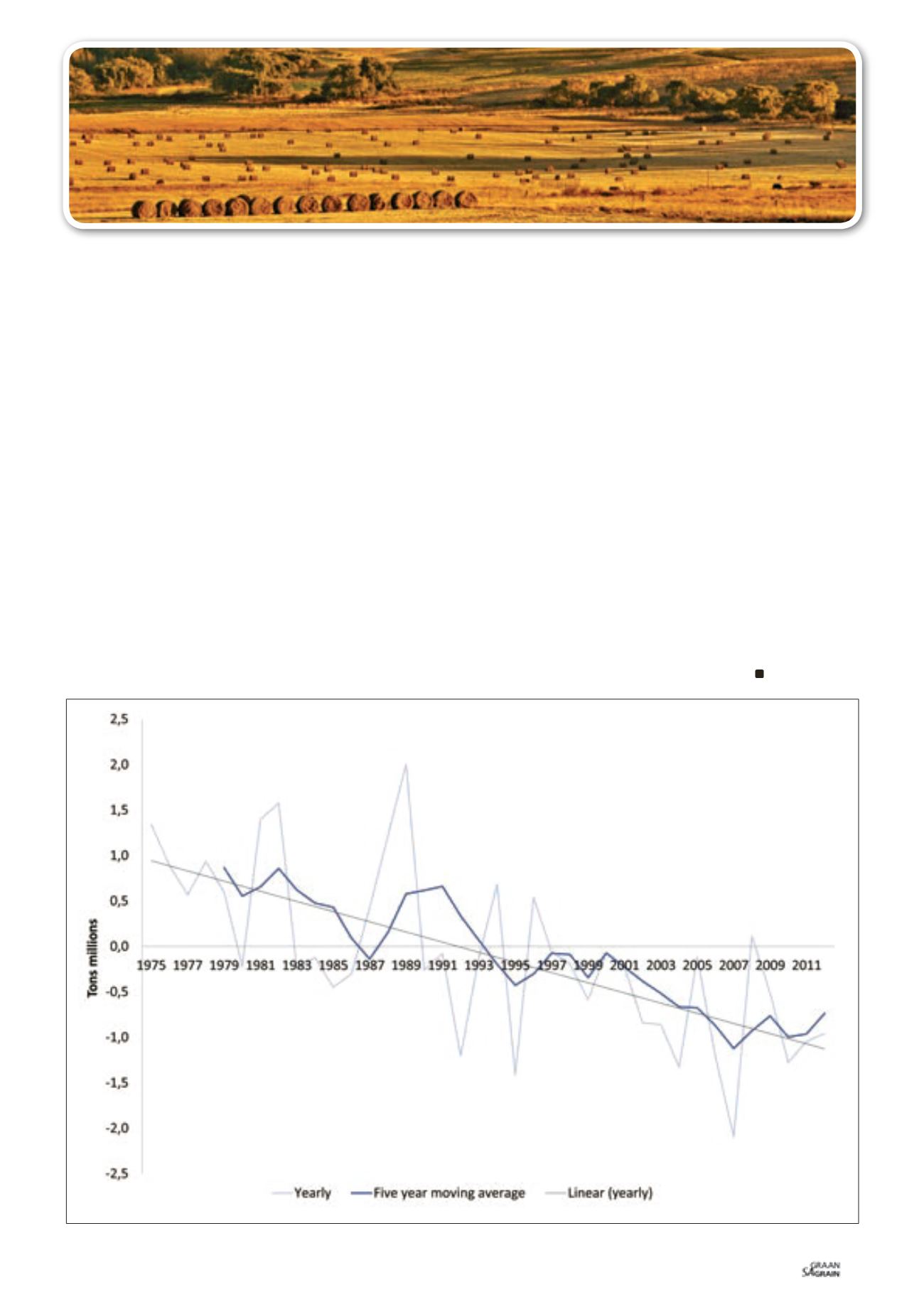

111
March 2015
This approach, though correct, is limited because it simply looks
at the direct contribution of the sector to GDP. An interesting al-
ternative is the use of multipliers to estimate the indirect impact
of changes in the sector on the rest of the economy. These multipli-
ers, calculated from national statistics, show that primary agriculture
has a backward linkage of 2,14 (the fifth highest in a 20 sector group-
ing of the economy).
This means that a R1 million increase in demand for agricultural
output will increase the combined output of the other production
sectors in the economy by R2,14 million (inclusive of the original
R1 million of the agricultural sector output). The closely related
food, beverage and tobacco industry is calculated at 2,3 – giving it
the third position.
The calculated forward linkage of the sector is 1,81 (the 18th high-
est of a 20 sector grouping of the economy). If there is a R1 million
increase in the cost of value added in the agricultural sector, then
the combined value of output of the other sectors in the economy
will increase by R1,81 million as a result of price increases.
Employment
Statistics on agricultural employment differ according to defini-
tion and source, but it is safe to say that the sector employs around
700 000 workers. This makes the sector one of the biggest employ-
ers in the economy. It is also important to note that the sector is
labour-intensive compared to other sectors, because it employs
about 4,6% of the total labour force. The mining and manufacturing
sectors, in comparison, represent 8,5% and 12,5% of the economy
whilst employing only 2,3% and 11,8% of the labour force respec-
tively. The agricultural sector therefore uses two units of labour per
unit of value added, whilst the ratio is 0,3 and 0,94 for the mining and
manufacturing sectors.
Investments in the sector, such as the expansion of irrigation capac-
ity for example, could deliver high employment creation returns.
On the negative side this is indicative of low labour productivity in
the sector.
Conclusion
The South African agricultural sector continues to play an important
role in the economy regardless of its declining share in GDP. Con-
trary to popular belief, the country is not self-sufficient in its food
supply, but does not operate as a net importer of agricultural prod-
ucts due to the exports of high value items such as fruit and wine.
The sector also ranks high in terms of its backward linkages with
the manufacturing sector, and acts as a major labour-intensive em-
ployer in the economy. Continued investment in extension, research
and infrastructure (particularly transport and irrigation) will have a
significant impact on a large number of households and the great-
er economy due to its employment and food security effects. This
would also ensure that the sector maintains its international com-
petitiveness and resulting positive trade balance.
Graph 1: South African net export quantities of meat, cereals, milk, cheese, eggs and vegetables.
SA Grain/
Sasol Chemicals (Fertiliser) photo competition
– Amanda van Blerk 2012

















